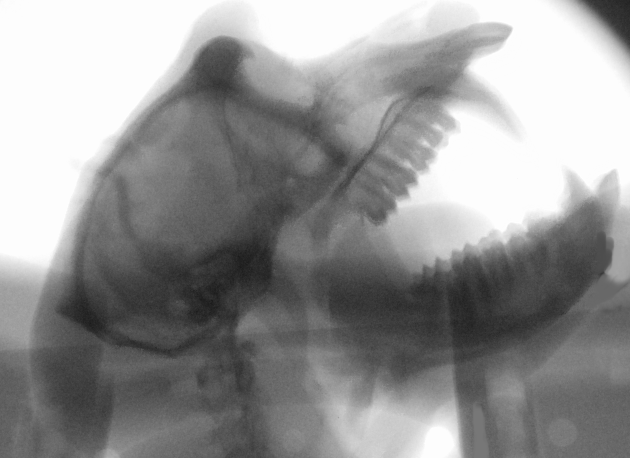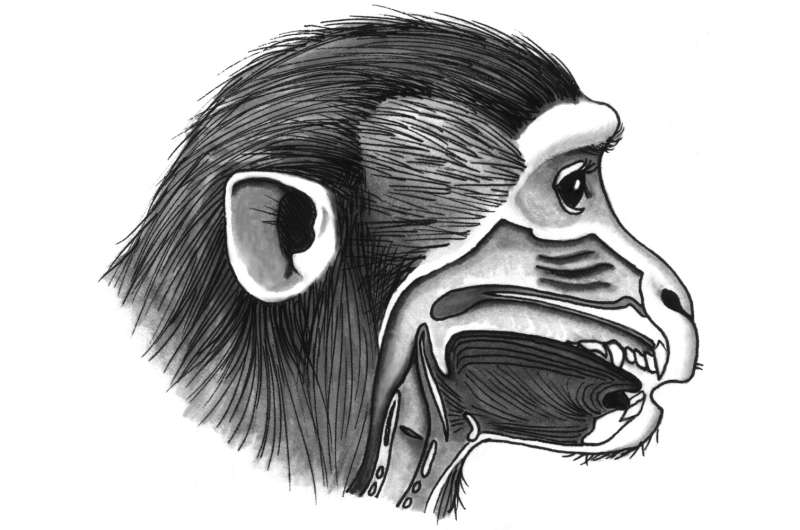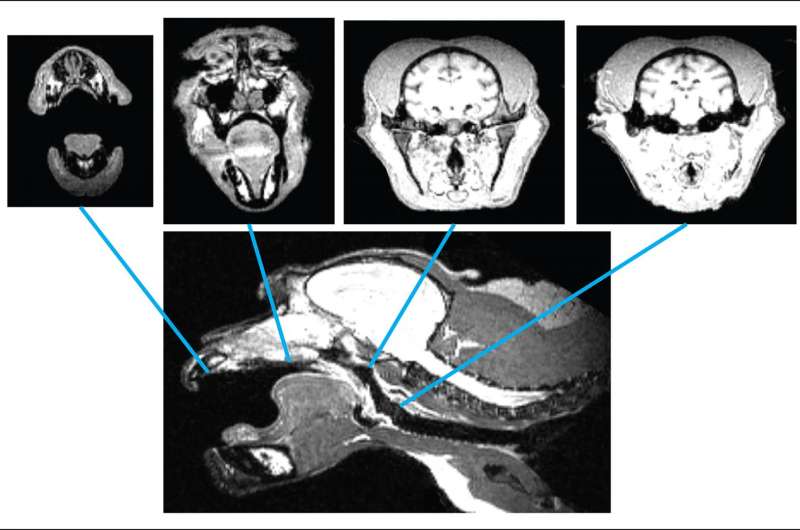Monkey speak: Macaques have the anatomy, not the brain, for human speech

Monkeys known as macaques possess the vocal anatomy to produce "clearly intelligible" human speech but lack the brain circuitry to do so, according to new research.
The findings—which could apply to other African and Asian primates known as Old World monkeys—suggest that human speech stems mainly from the unique evolution and construction of our brains, and is not linked to vocalization-related anatomical differences between humans and primates, the researchers reported Dec. 9 in the journal Science Advances.
Co-corresponding author Asif Ghazanfar, a Princeton University professor of psychology and the Princeton Neuroscience Institute, said that scientists across many disciplines have long debated if—and to what extent—differences between the human and primate vocal anatomy allow people to speak but not monkeys and apes.
"Now nobody can say that it's something about the vocal anatomy that keeps monkeys from being able to speak—it has to be something in the brain. Even if this finding only applies to macaque monkeys, it would still debunk the idea that it's the anatomy that limits speech in nonhumans," Ghazanfar said. "Now, the interesting question is, what is it in the human brain that makes it special?"
Thore Jon Bergman, an assistant professor of psychology and ecology and evolutionary biology at the University of Michigan, said that the research could help narrow down the origin of human speech.
"It looks like mainly neuro-cognitive—as opposed to anatomical—differences contribute to the broader range of sounds we produce relative to other primates," said Bergman, who is familiar with the research but was not involved in it.

"An important part of understanding human uniqueness is to know what our relatives do," he said. "This study shows that the anatomical capability to make a variety of sounds, as we do with speech, was present long ago. This is useful for understanding the starting point for the evolution of language."
Ghazanfar and his co-authors investigated the range of movements that the primate vocal anatomy could produce. Previous examinations of primate vocal anatomy conducted on cadavers had concluded that monkeys and apes have a very limited range of sounds they could produce relative to humans.
Ghazanfar and co-corresponding author Tecumseh Fitch, a professor of cognitive biology at the University of Vienna in Austria, however, used X-ray videos to capture and then trace the movements of the different parts of a macaque's vocal anatomy—such as the tongue, lips and larynx—during a number of orofacial behaviors. These data were converted by coauthor Bart de Boer of the VUB Artificial Intelligence Laboratory in Belgium into a computer model that could predict and simulate a macaque's vocal range based on the physical attributes recorded by X-ray.
Human speech stems from a source sound produced by the larynx that is changed by the positions of the vocal anatomy such as the lips and tongue, Ghazanfar said. For example, the same source sound lies behind the words "bat" and "bot" with the facial anatomy generating the different sound we hear.
The researchers plugged the source sound of a macaque's grunt call into their computer model of the primate's vocal anatomy. They found that a macaque could produce comprehensible vowel sounds—and even full sentences—with its vocal tract if it had the neural ability to speak. The researchers note, however, that while a macaque would be understandable to the human ear, it would not sound precisely like a human.
"This new result tells us that there's still a big mystery concerning where human speech came from," said Laurie Santos, a psychology professor at Yale University who is familiar with the research but had no role in it.

The existence of a human-like vocal tract in an old species such as the macaque suggests that more recently evolved species such as chimpanzees—which are closely related to humans—very likely have one as well, Santos said. And if that is true, it could mean that studying the chimpanzee brain could help reveal the neural networks that allow humans to speak while their evolutionary cousins cannot.
"The paper opens whole new doors for finding the key to the uniqueness of humans' unparalleled language ability," Santos said.
"If a species as old as a macaque has a vocal tract capable of speech, then we really need to find the reason that this didn't translate for later primates into the kind of speech sounds that humans produce," she said. "I think that means we're in for some exciting new answers soon."
Because this work shows that macaques express nearly the same range of physical movements as humans during vocalization, primates could be used as models for understanding early human speech development and human speech evolution, Ghazanfar said.
"Their value as a model system for studying the parts of the brain that directly control the biomechanics of orofacial movements during speech and other vocal behaviors will increase," Ghazanfar said. "Moreover, it's going to force us to think more carefully about how speech evolved, how our brain is uniquely human and how we can use these model animals in the future to understand what goes wrong when we are unable to speak."
More information: W. T. Fitch, B. de Boer, N. Mathur, A. A. Ghazanfar, Monkey vocal tracts are speechready, Science Advances 2, e1600723 (2016). DOI: 10.1126/sciadv.1600723
Journal information: Science Advances
Provided by Princeton University


















